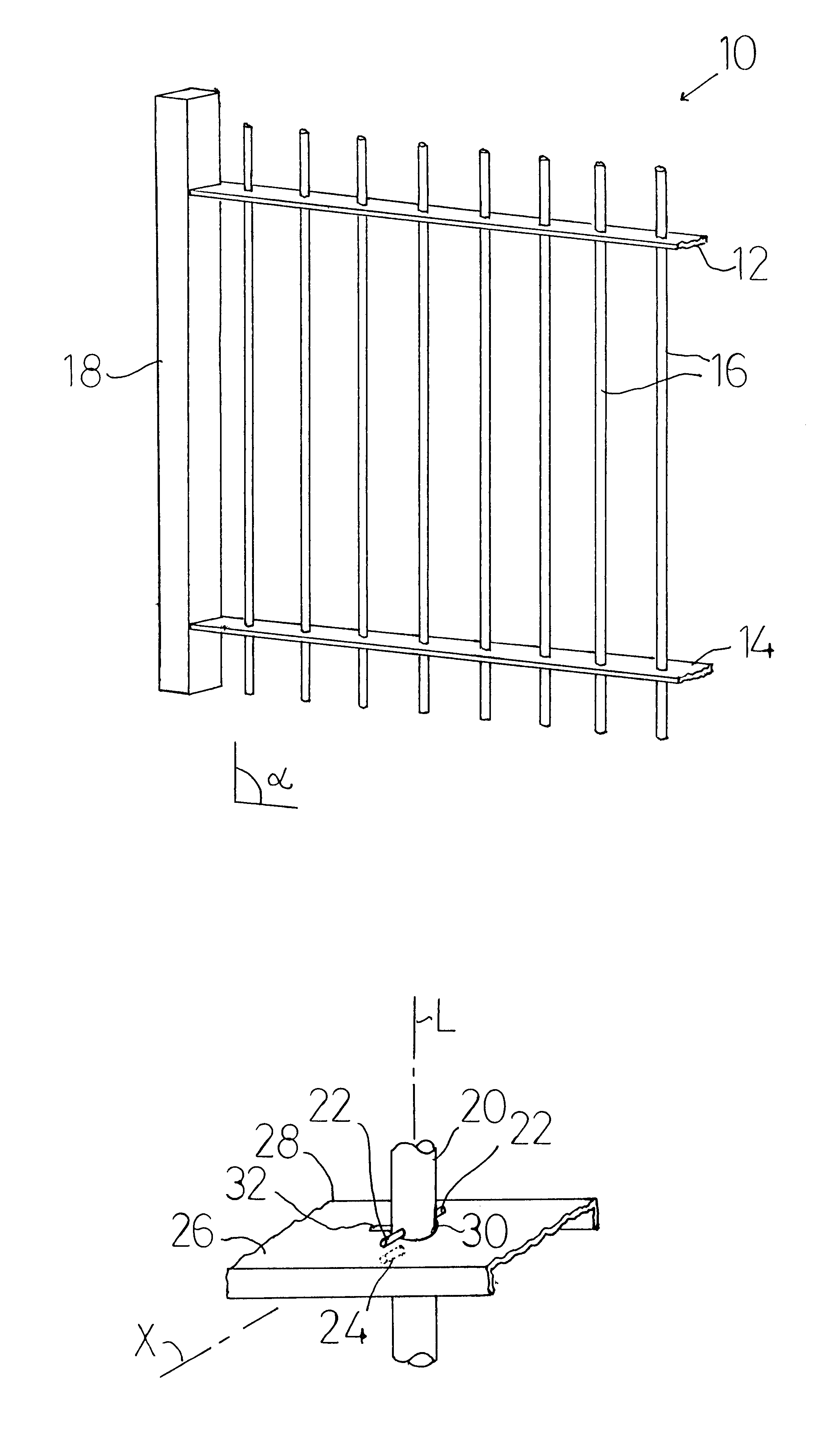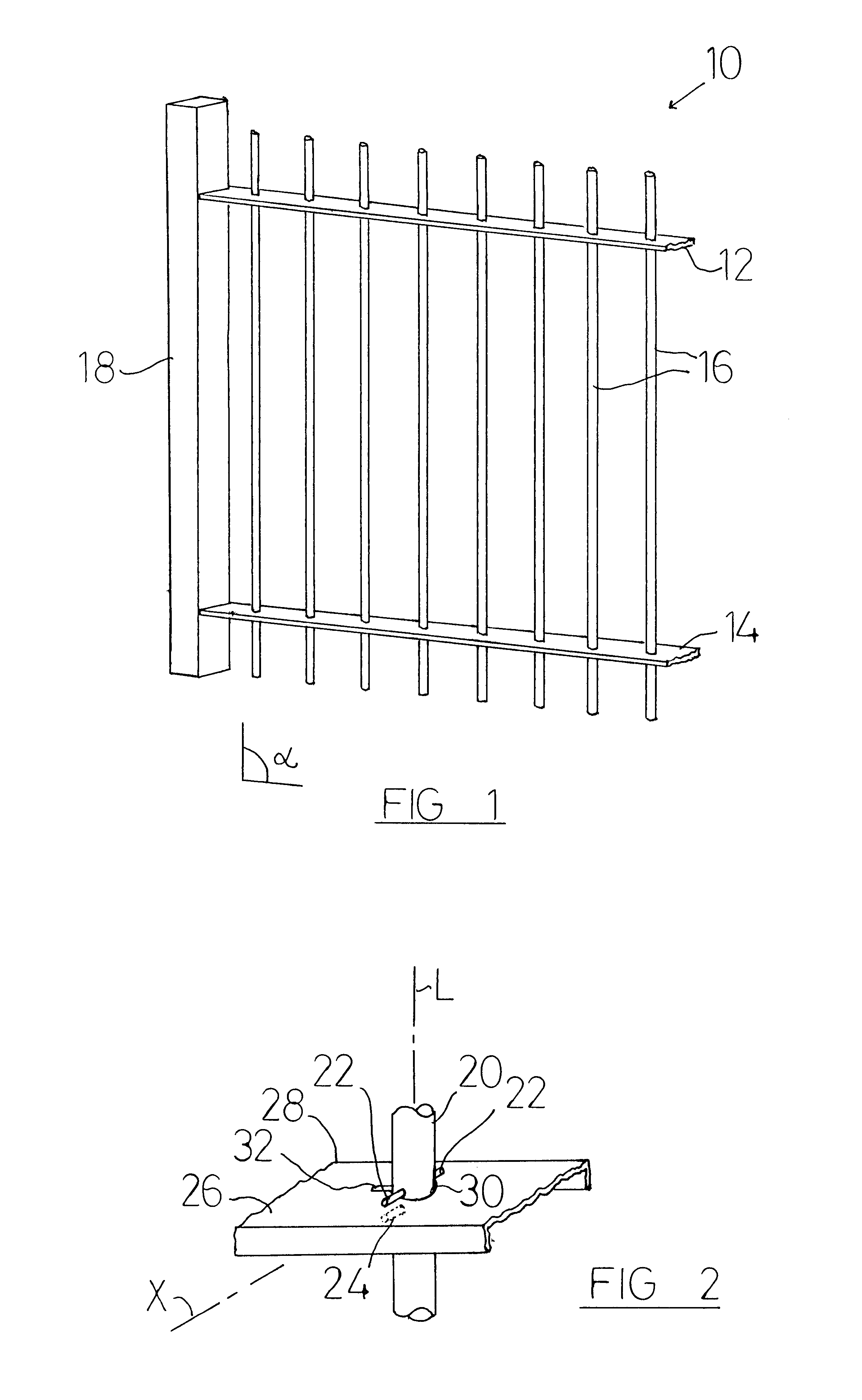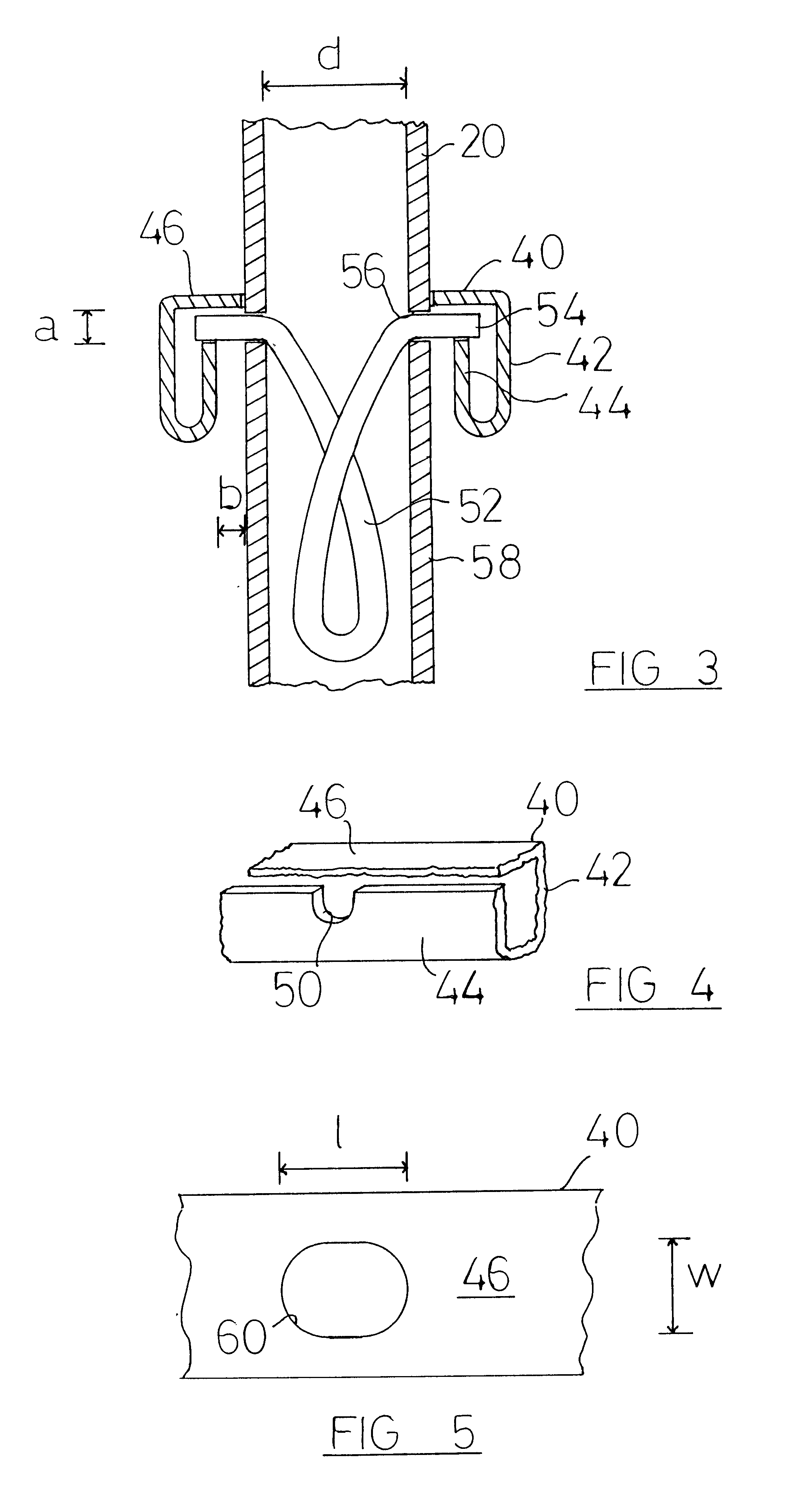Vertical fencing
a vertical tube and fencing technology, applied in the field of vertical tube fencing, can solve the problems of difficult and expensive transportation from the manufacturing location to the fence site, the difficulty of crimping the inability to reliably crimp the tubes used for vertical tube fencing,
- Summary
- Abstract
- Description
- Claims
- Application Information
AI Technical Summary
Benefits of technology
Problems solved by technology
Method used
Image
Examples
Embodiment Construction
In the following description, directional and orientational terms such as "top", "bottom" etc. refer to the orientation of the components as drawn, which will typically also be the orientation of use.
The vertical fence section 10 (part of which is shown in FIG. 1) comprises two rails 12,14 to which a number of fence members 16 are attached. The rails 12,14 are both connected to a post 18 in known fashion. In this embodiment, the fence is non-self-adjusting, so that the angular (in this embodiment perpendicular) relationship between the fence members 16 and the rails 12,14 is fixed. The fence members 16 in this embodiment are welded to the rails 12,14.
Typically, an assembed fence will comprise a number of fence sections 10, each fence section being connected to posts 18 by way of the ends of the rails 12,14. The posts 18 define the line of the fence and are erected on the site. The fence sections 10 are generally pre-assembled i.e. manufactured off-site and supplied to the site ready...
PUM
 Login to View More
Login to View More Abstract
Description
Claims
Application Information
 Login to View More
Login to View More - R&D
- Intellectual Property
- Life Sciences
- Materials
- Tech Scout
- Unparalleled Data Quality
- Higher Quality Content
- 60% Fewer Hallucinations
Browse by: Latest US Patents, China's latest patents, Technical Efficacy Thesaurus, Application Domain, Technology Topic, Popular Technical Reports.
© 2025 PatSnap. All rights reserved.Legal|Privacy policy|Modern Slavery Act Transparency Statement|Sitemap|About US| Contact US: help@patsnap.com



